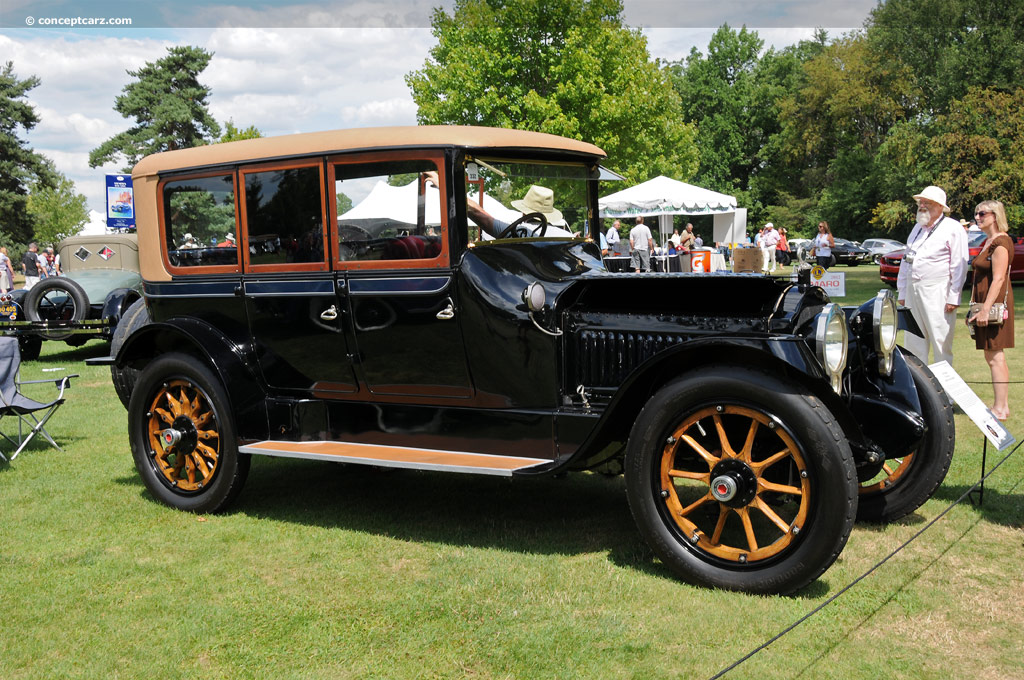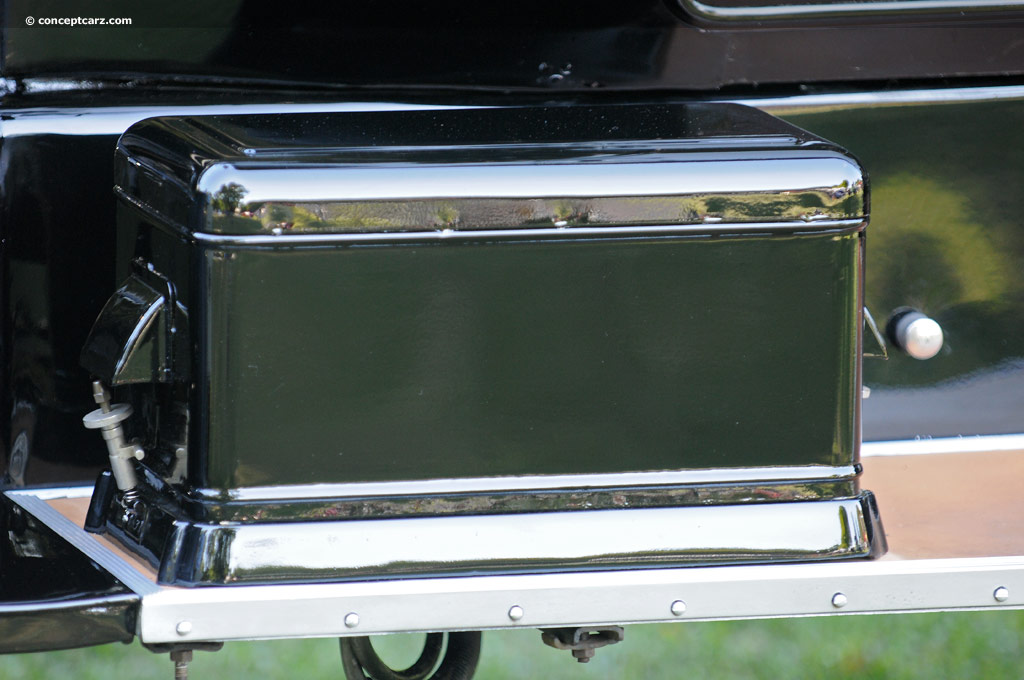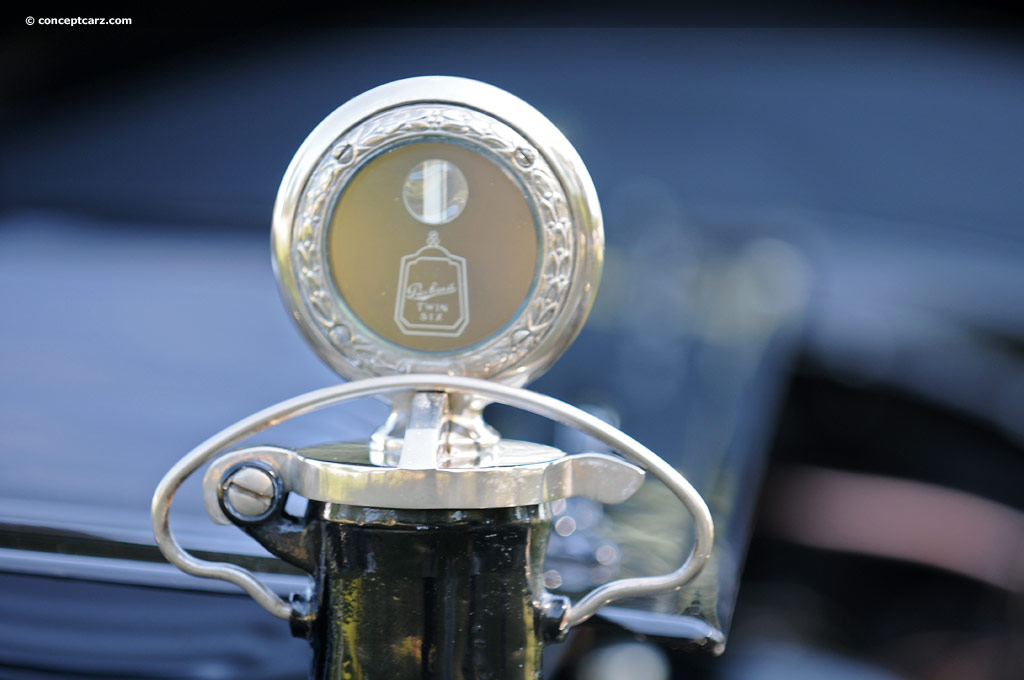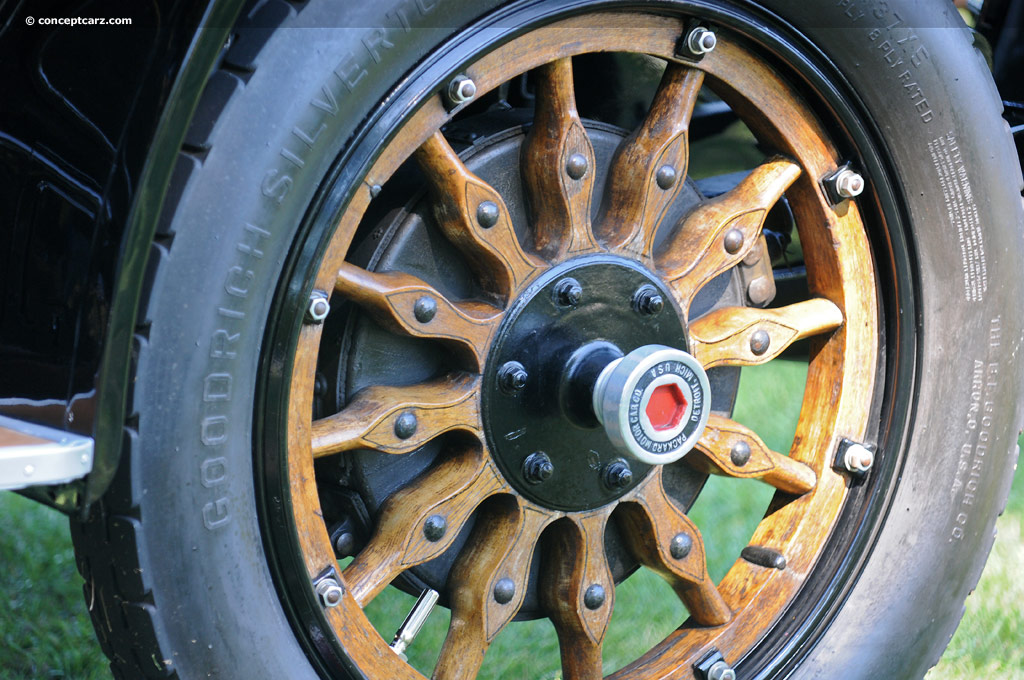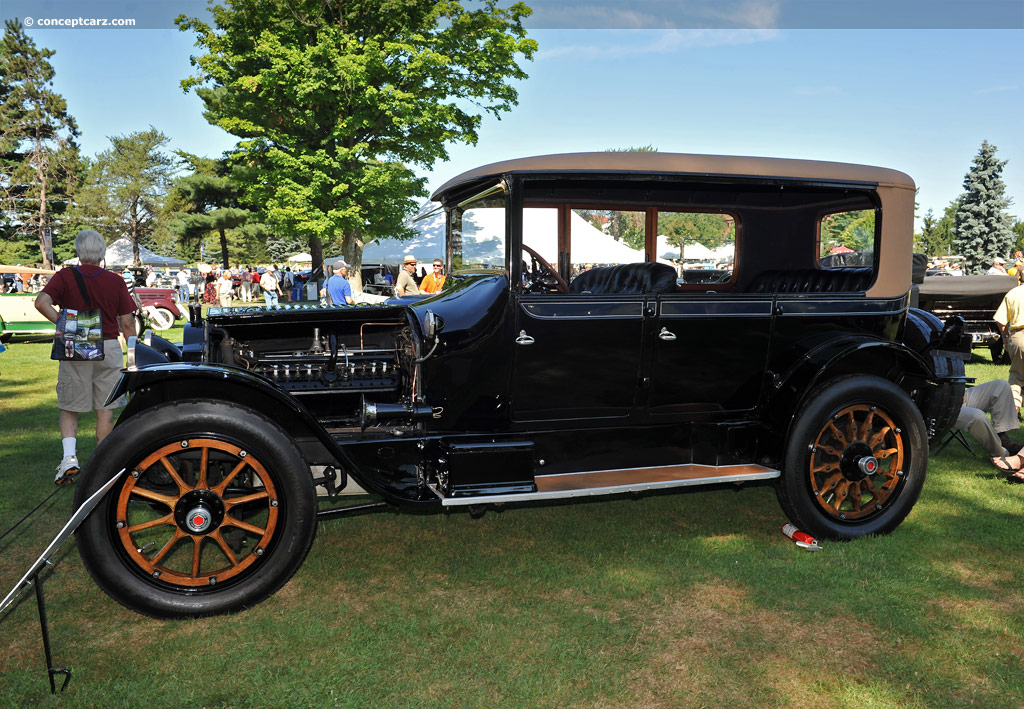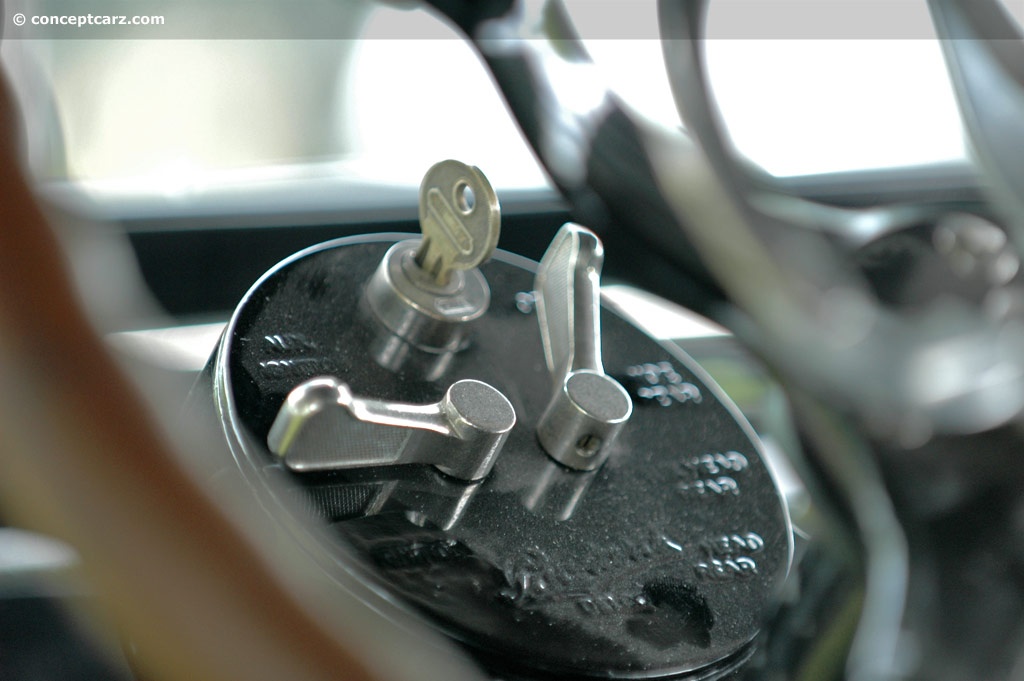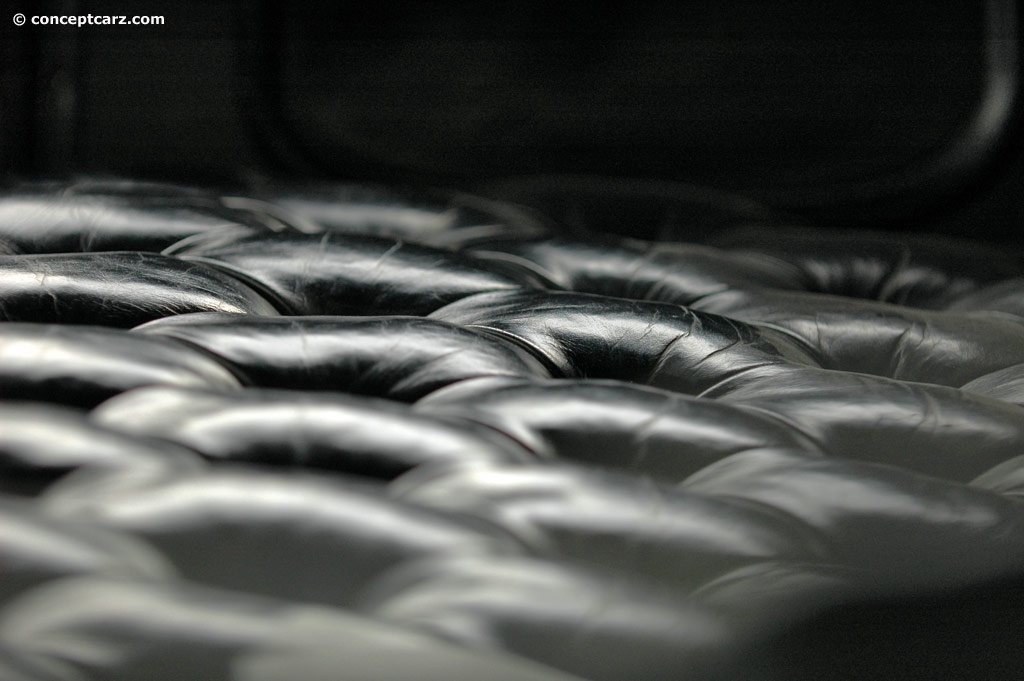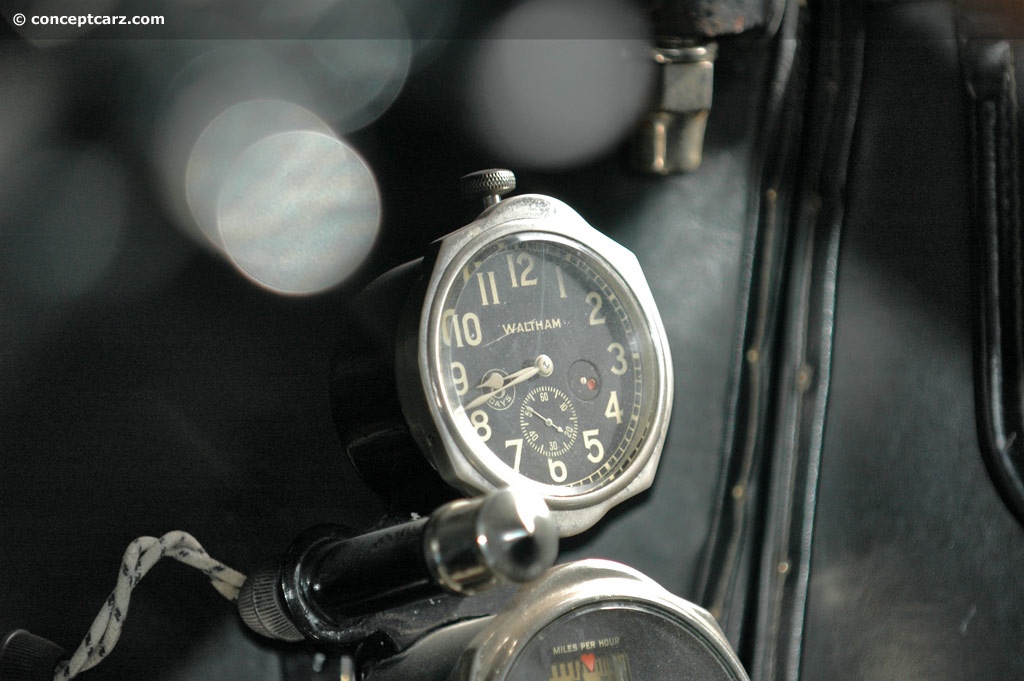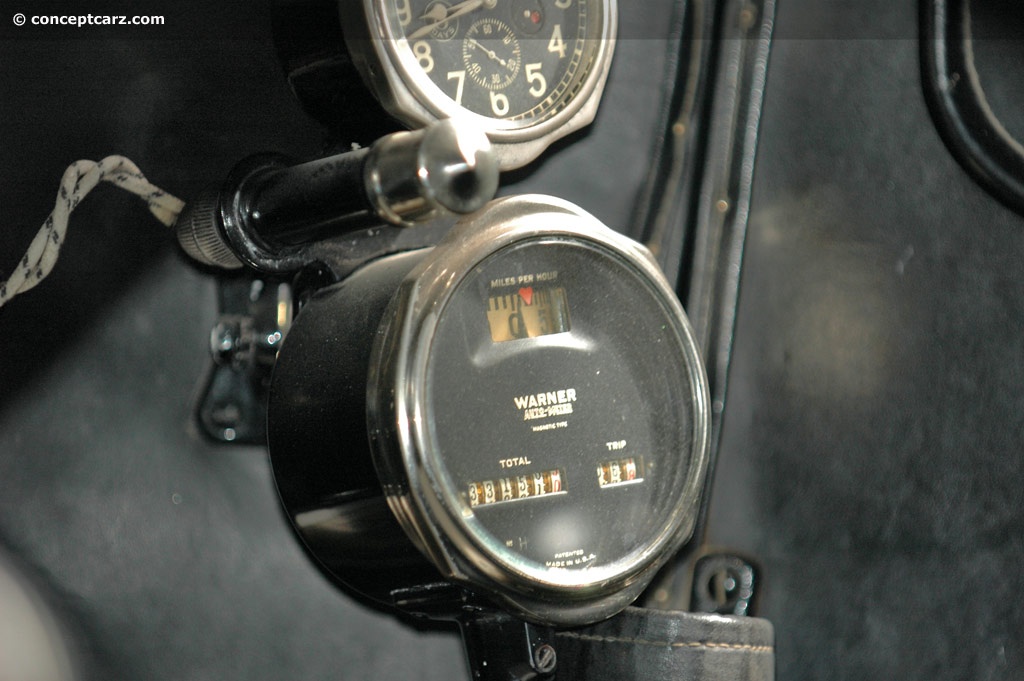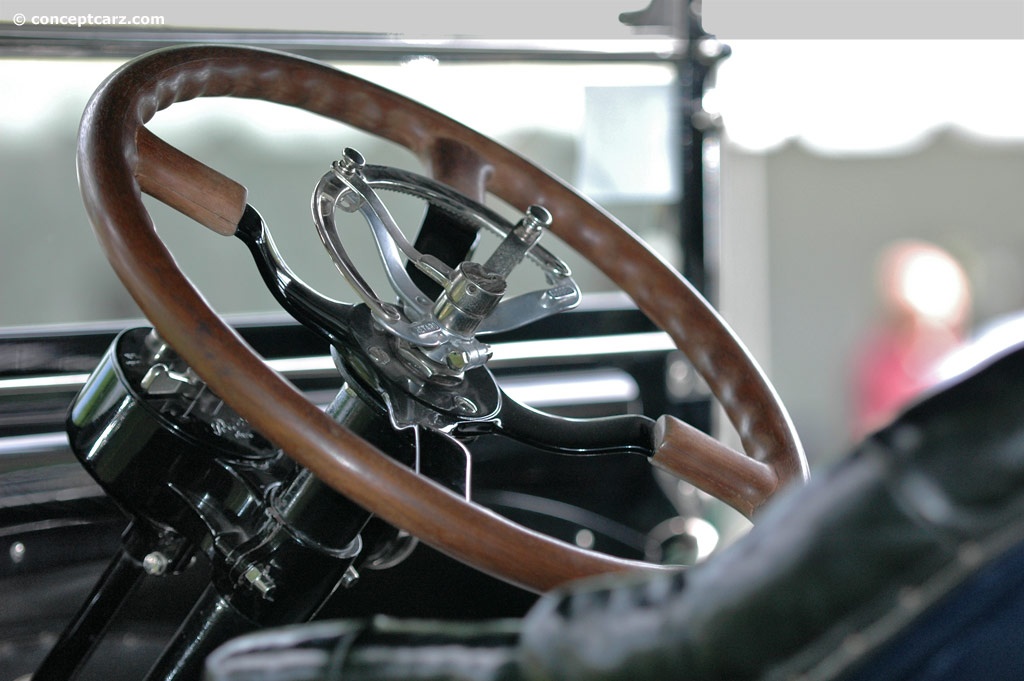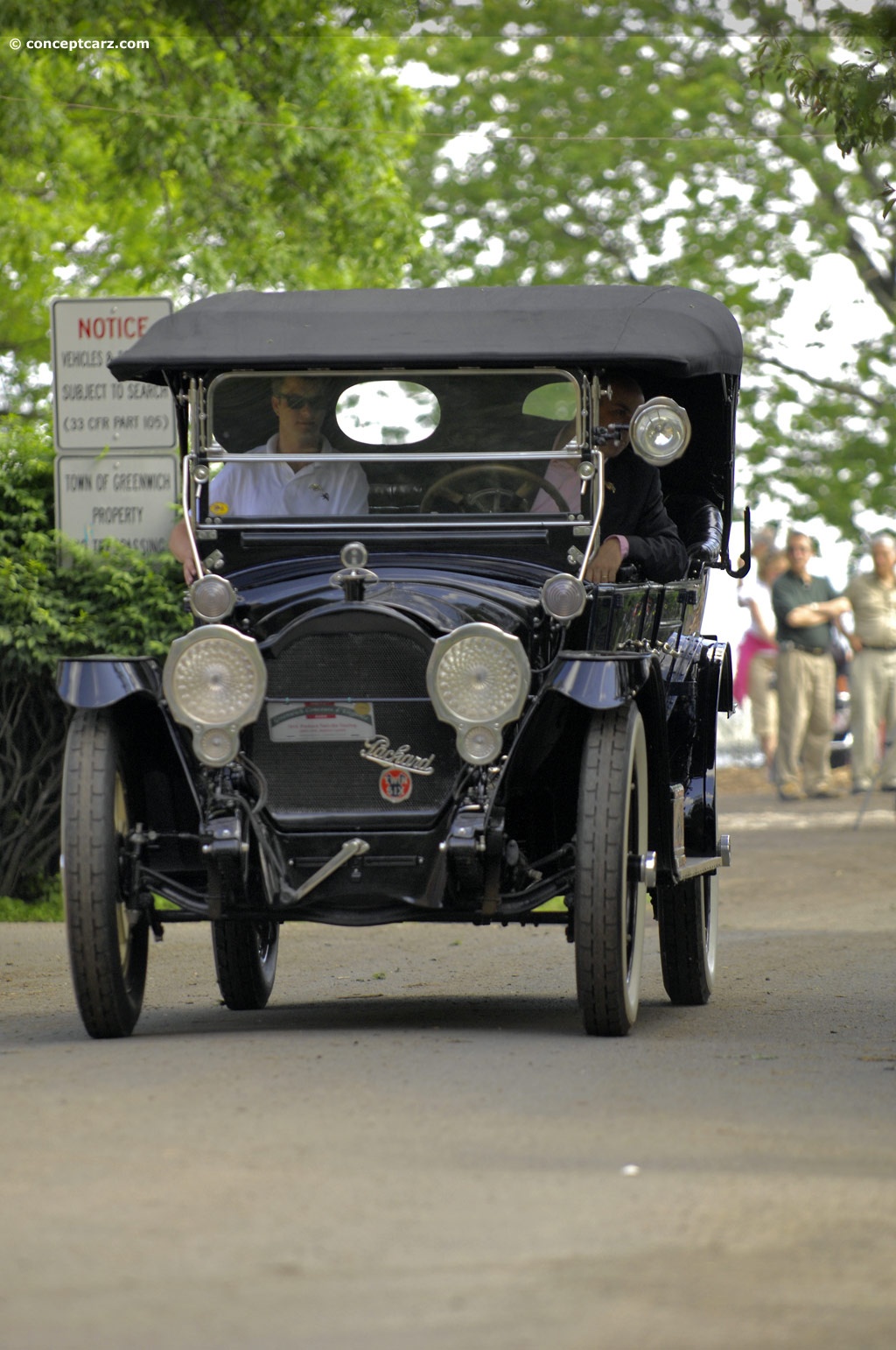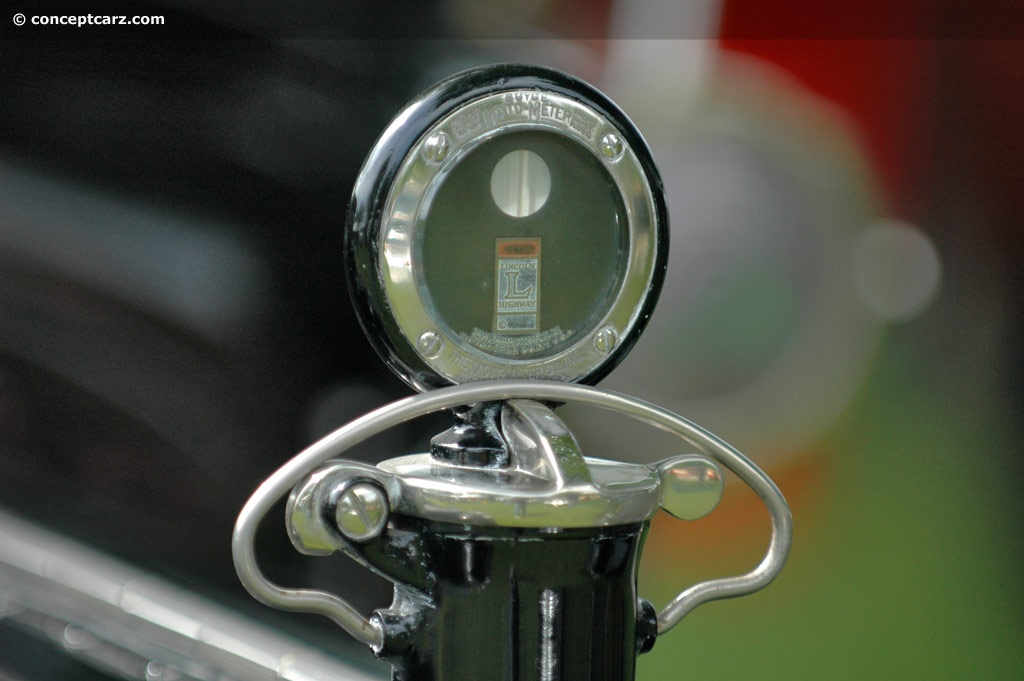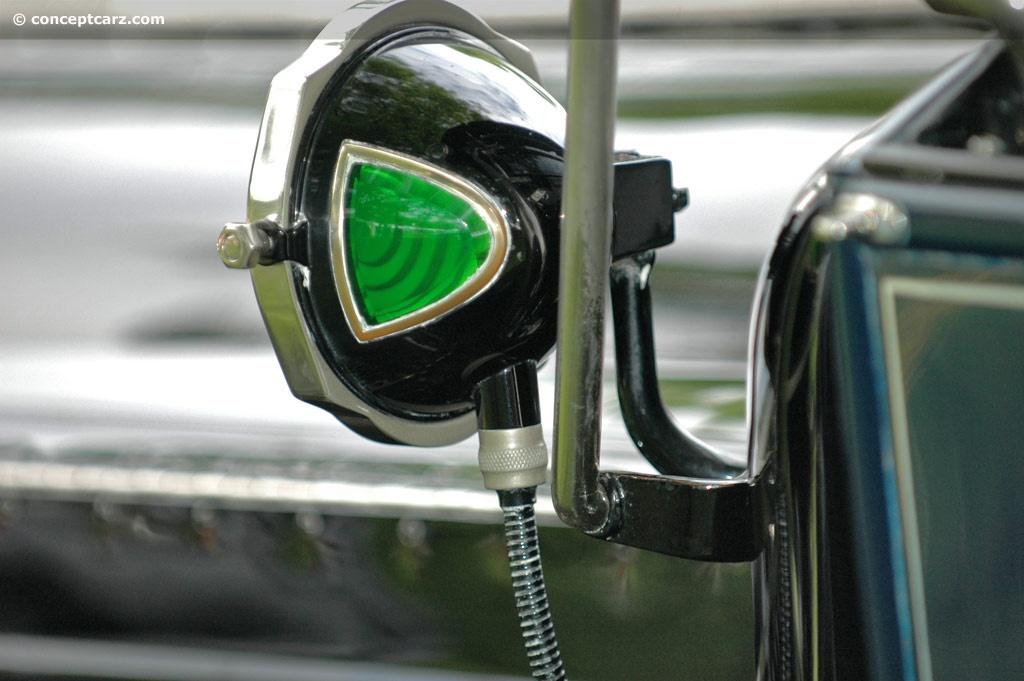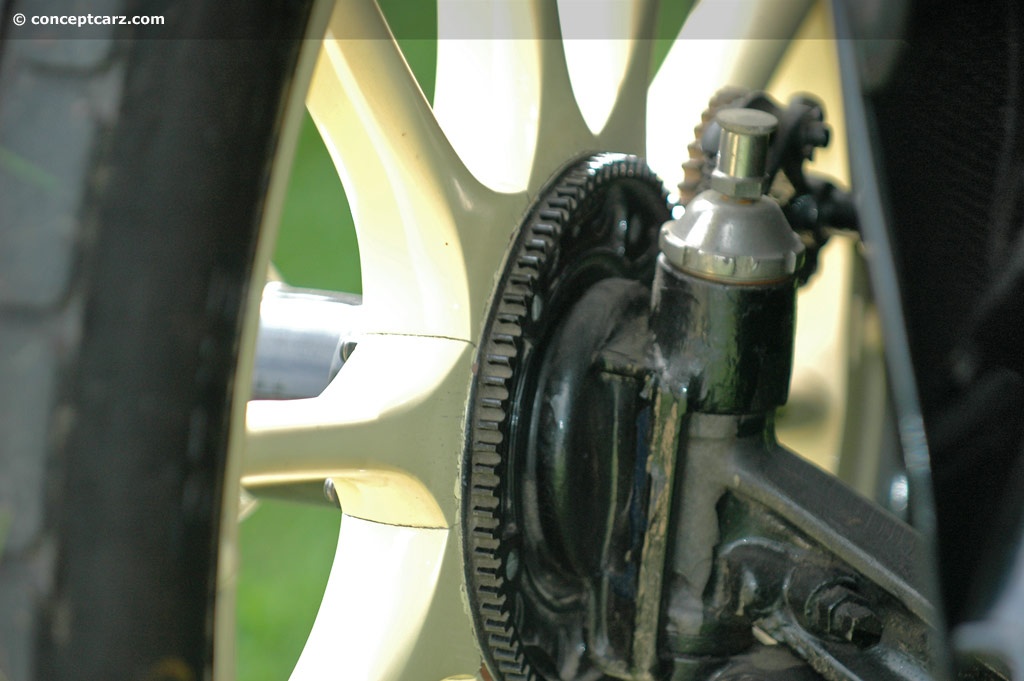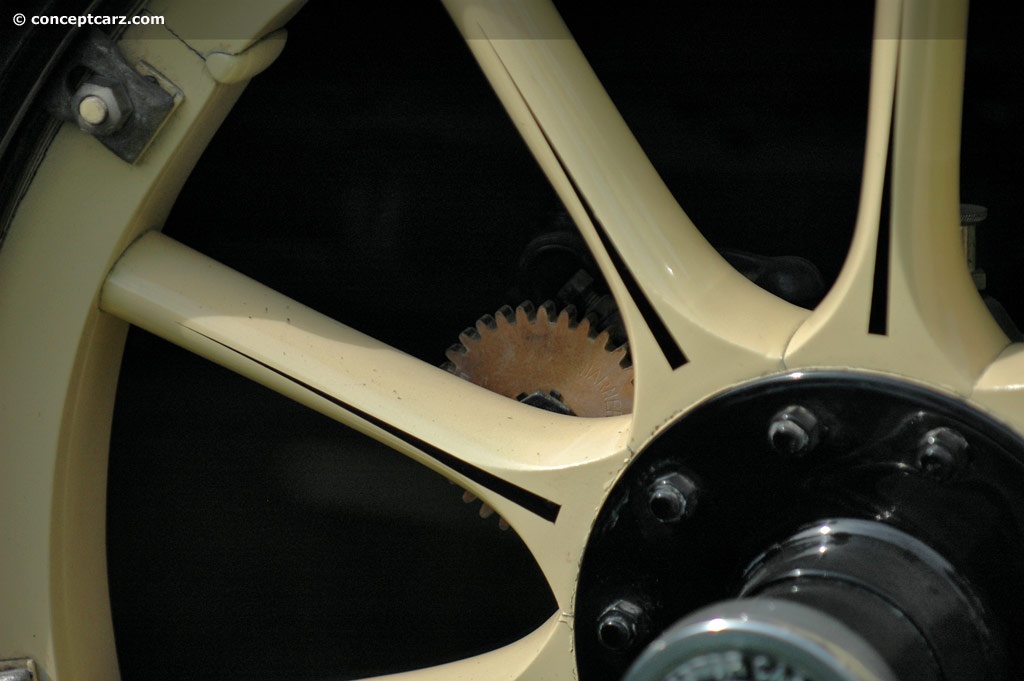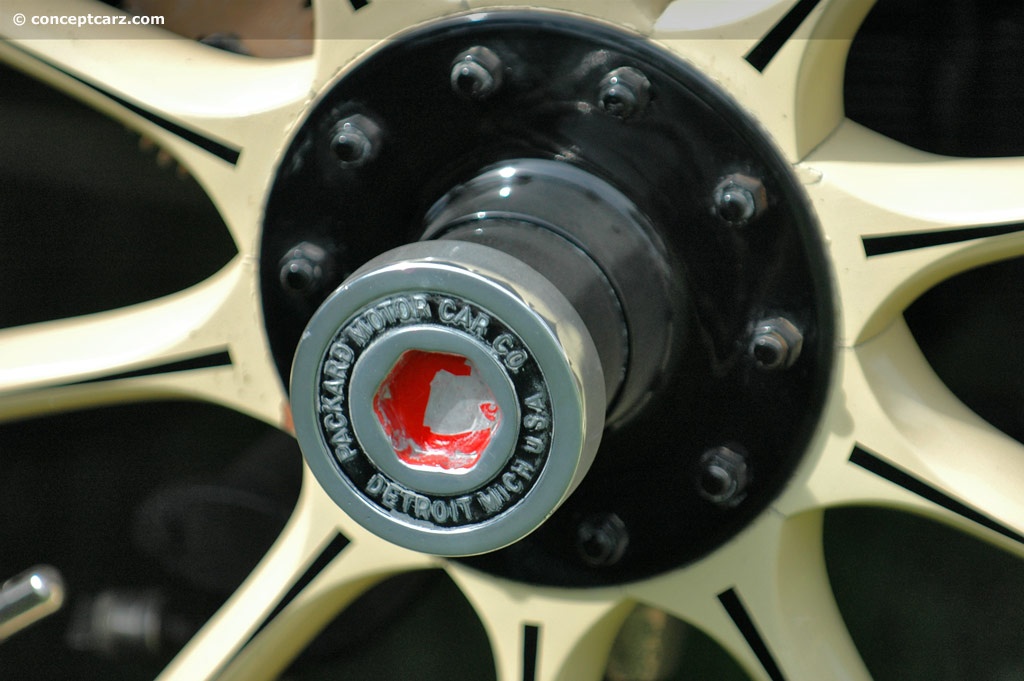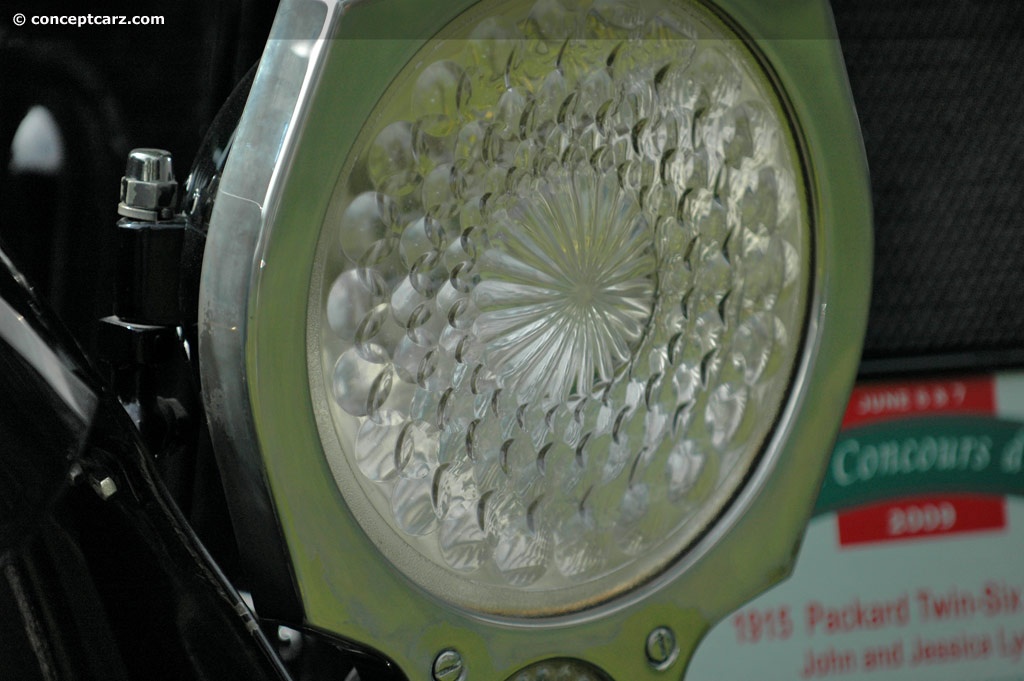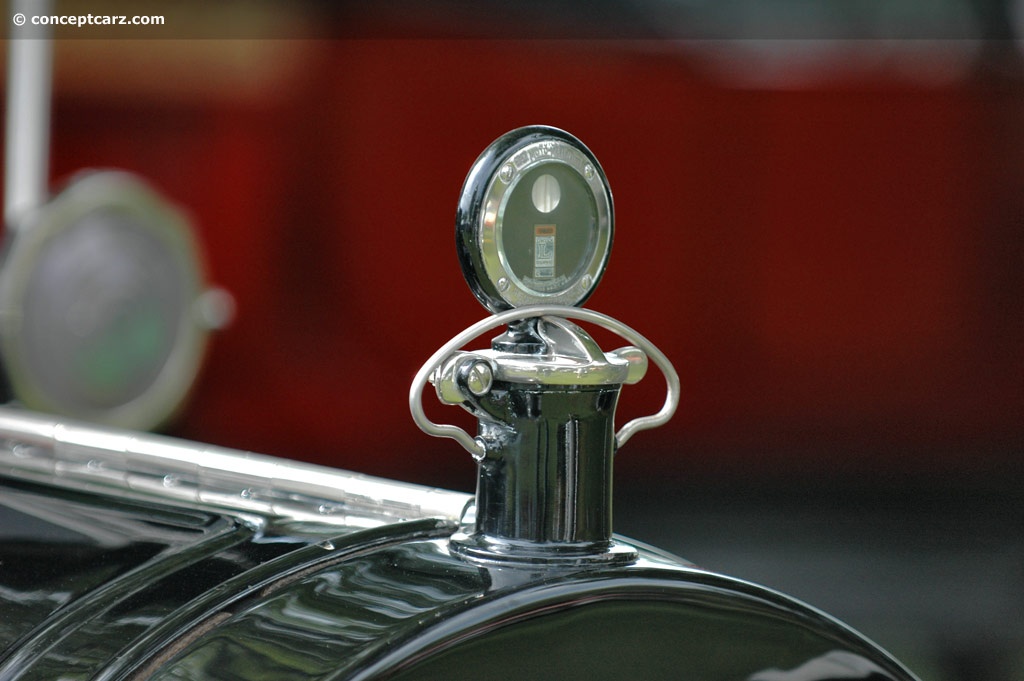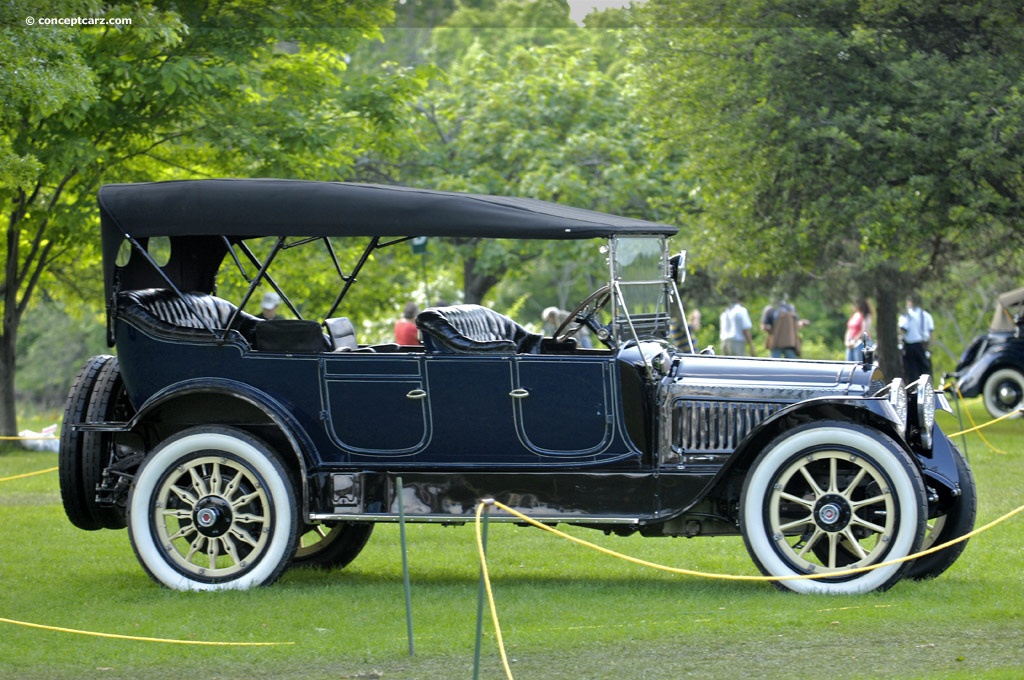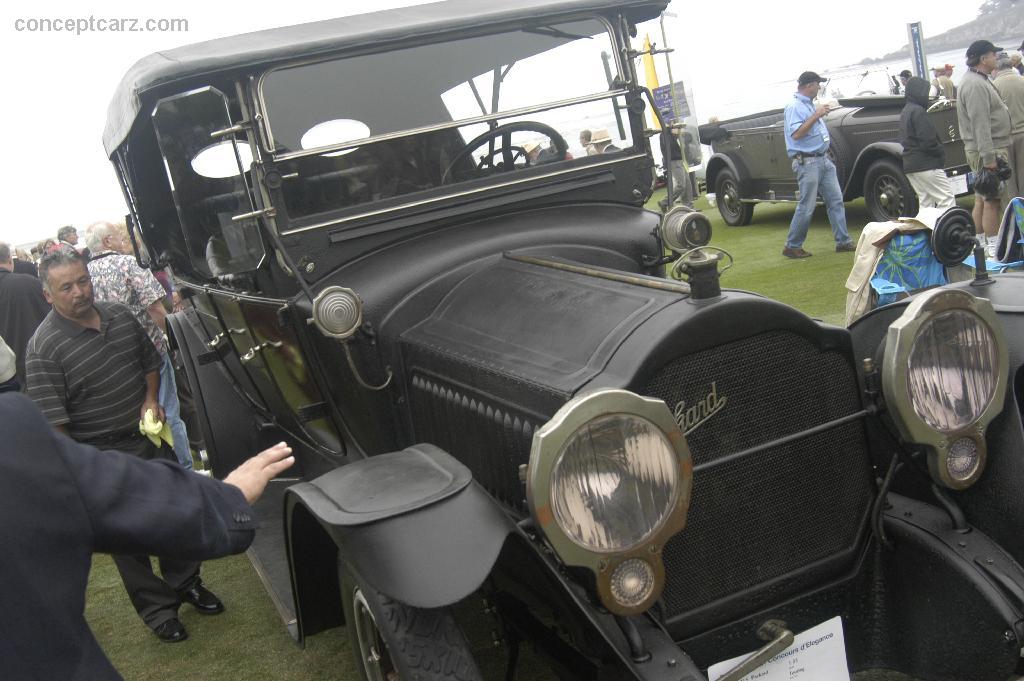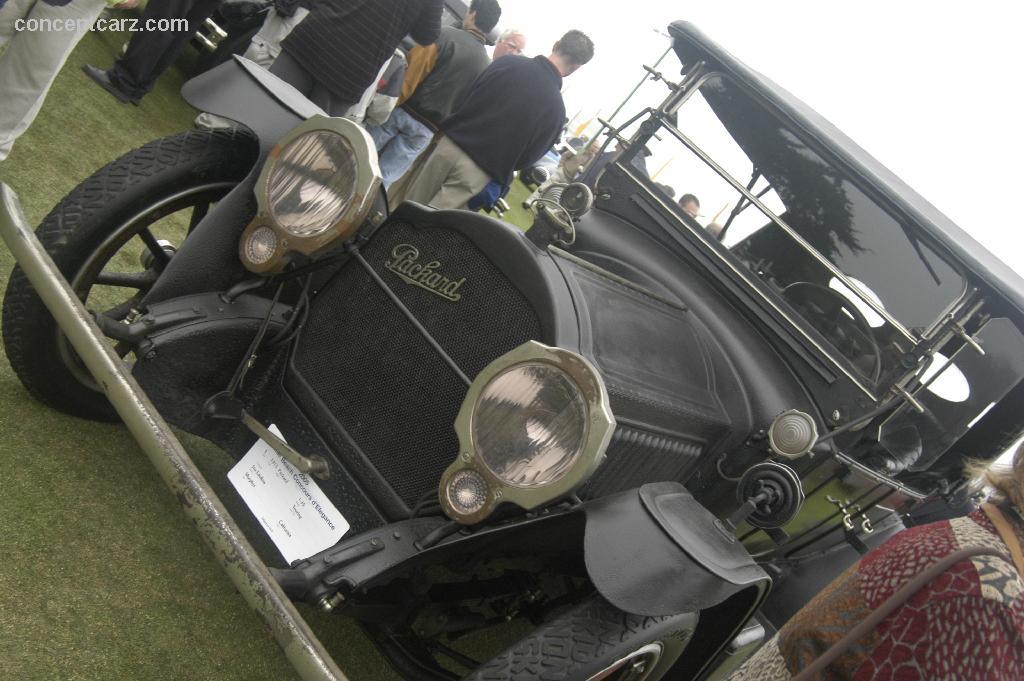The new Twin Six was a vehicle that would place the company in the luxury field for the next two decades and set the tone of Packard’s overall thinking for many years. The cars were keyed directly to the upper-scale sales bracket. Two series were offered – the 1-25 with nine body styles and the 1-35 with 13 styles. The designations were based on wheelbase, not horsepower. The 2-door passenger coupe cost was $2,700 and the 3-passenger coupe was $3,700. One of the Twin Six’s best testimonials came from the home of Rolls Royce. ‘For twenty years the Packard car had held the reputation of being in America what the Rolls Royce is in England.’ The chassis of the new Twin-six bears no resemblance to earlier Packard’s it is a channel section pressed steel 6 inches deep. The front axles are I-beam with roller bearings and the rear axles are beam tubular steel, semi-floating.
The Twin Six was introduced in May of 1915 for the 1916 model year. The 424.1 cubic-inch L-head V-12 engine had a single Packard carburetor and delivered 88 horsepower at 2,600 PRM. It was backed by a three-speed manual gearbox, and rear-wheel mechanical drum brakes provided the stopping power.
Upon the introduction of the Twin Six in 1915, Henry Joy, president of Packard Motor Car Co., proclaimed it to be ‘the greatest piece of machinery that ever went upon the highways.’
The twelve-cylinder Packard would be the company’s only model through 1921 when it was joined by the (six-cylinder) Single Six. The twelve-cylinder model was phased out in 1923, leaving the Single Six and the newly introduced eight-cylinder model. Packard was solely powered by eight-cylinder power from 1929 through 1931. In 1932, the Twin Six returned and would remain through 1939.
